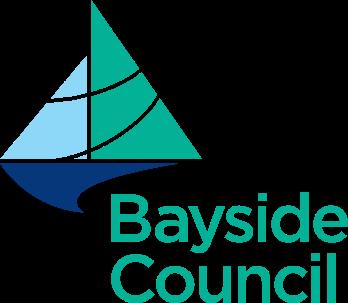


Acknowledgement of Country Bayside Council acknowledges the Bidjigal Clan, the traditional owners of the land on which we meet and work and acknowledges the Gadigal people of the Eora Nation. Bayside Council pays respects to Elders past and present.




Acknowledgement of Country Bayside Council acknowledges the Bidjigal Clan, the traditional owners of the land on which we meet and work and acknowledges the Gadigal people of the Eora Nation. Bayside Council pays respects to Elders past and present.
Council manages over 50,000 public assets worth circa $1.88 billion that benefit our community, which equates to approximately $37,500 per capita. As our city grows and attracts more people, our existing infrastructure wears out, increasing the demand for renewal and enhancement.
To determine what we can afford, we must understand how population growth and challenges like climate change, impact long term maintenance and renewal costs. As assets degrade and community expectations change, we must be transparent on our service standards and levels to balance economic, social, cultural, and environmental factors within a limited budget.
This ensures our assets support the services and amenities our community needs and expects, both now and in the future, providing sustainable benefits for all residents.

Our Asset Management Strategy underpins Council’s long-term sustainability. By prioritising transparency and accountability, while working with residents and community groups, we ensure our decisions are based on factual evidence and reflect the needs of our growing community.
Councillor Edward McDougall Mayor
Our strategy guides the development of a sound investment plan, ensuring our assets are fit for purpose, meet community expectations and are affordable for ratepayers.
Meredith Wallace General Manager

The Asset Management Strategy (AMS) serves as a strategic roadmap for managing and utilising asset resources to maximise value and efficiency. It aligns assets with organisational goals, ensuring sustainability and mitigating risks. By addressing intergenerational equity, it ensures future generations benefit fairly. The strategy aids decision making and optimises resource allocation, enhancing operational efficiency and supporting long-term success.
This Strategy demonstrates Council’s commitment to best practice asset management and provides principles for sound asset investment decision making. It details how we will optimise capital and maintenance requirements, balance new assets and growth with current infrastructure, to deliver services in line with evolving community needs and expectations.
The Asset Management Strategy addresses the following:
The challenges of balancing economic, social, cultural, and environmental factors within a finite budget.
Our current asset management maturity and an action plan to address the gaps.
Expenditure forecasts that will guide future maintenance, renewal programs, and capital projects, impacting long-term financial planning and annual budgets.
Located in the heart of Sydney, Bayside stretches over 29 suburbs including Bexley, Kingsgrove, and Carlton in the west; Banksmeadow, Hillsdale, Pagewood, Daceyville and Rosebery in the east; Wolli Creek and Turrella in the north; plus Rockdale, Mascot, Botany, Sydney Airport and Port Botany down to the coastal communities of Brighton Le Sands, Ramsgate, Dolls Point and Sandringham in the south.
We are very proud of our local area and all that it offers. With our many parks, sporting facilities and picturesque foreshore, as we surround Botany Bay (Kamay) with 8 kilometres of beach and parkland, we believe that Bayside is truly one of the best places to live in Sydney
Our significant wetlands provide important corridors for native flora and fauna, as well as places for our community to engage with natural surroundings
Bayside is well served with public transport with two main train lines and several busy bus routes. There are many great schools, boutique businesses, active laneways and precincts and a very vibrant mix of cultures.
Central to the area is the logistics core of NSW. Bayside has two major international transport hubs, the Sydney Kingsford Smith Airport in Mascot and Port Botany, the largest container port in NSW. These areas are significant as they enable people and products to travel around the world and to come to Australia. Goods arriving at our ports are transported right around the country and Sydney is the busiest airport in Australia. Our local economy will mature as innovation and growth takes advantage of these opportunities.
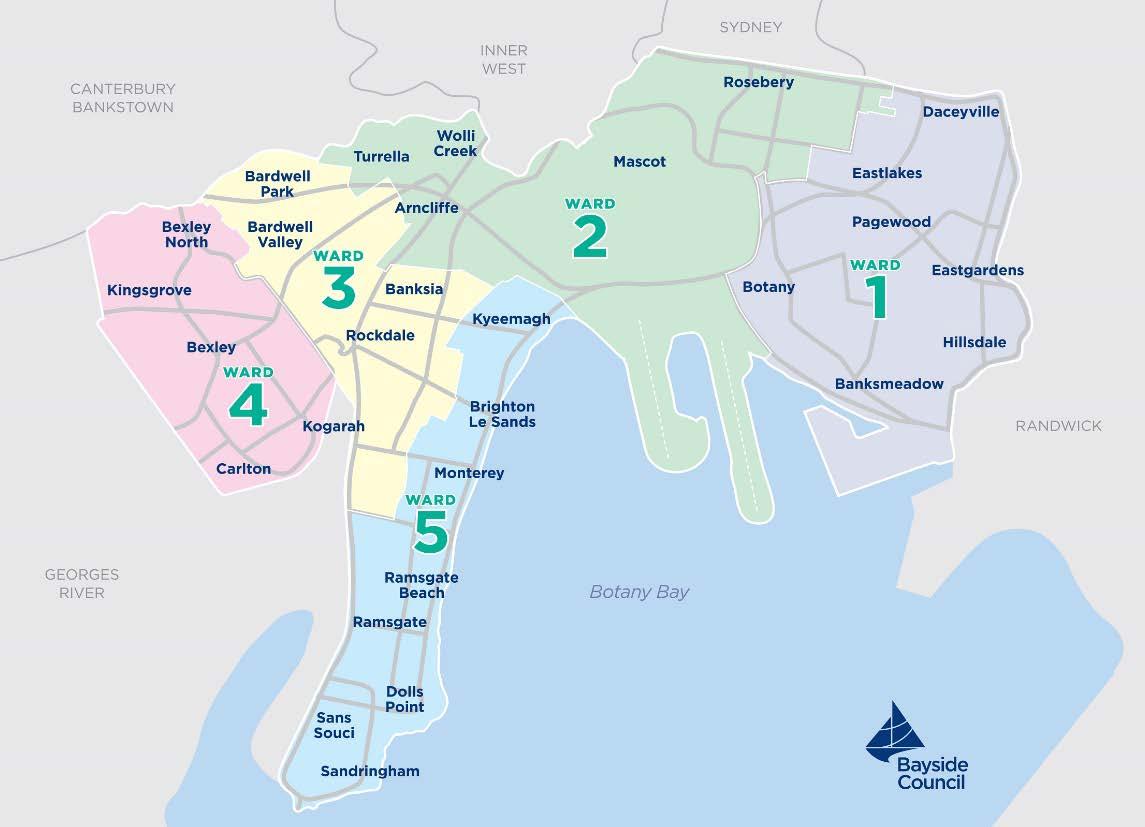
Almost 183,000 residents live in Bayside and this is expected to increase by 30,000 by 2036. Bayside is home to a diverse community hailing from Australia and all over the world. People of all ages enjoy life in Bayside, many speak a language other than English at home and almost half were born overseas.
First Nations people have lived on the shores of Botany Bay (Kamay) for tens of thousands of years All of these different cultures enrich our area with their traditions, celebrations and stories.
Following are some statistics that demonstrate that diversity.

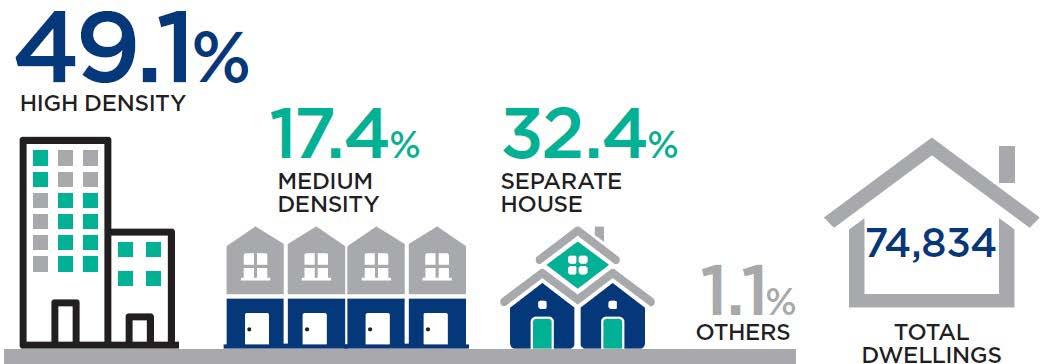

In 2036 we will be
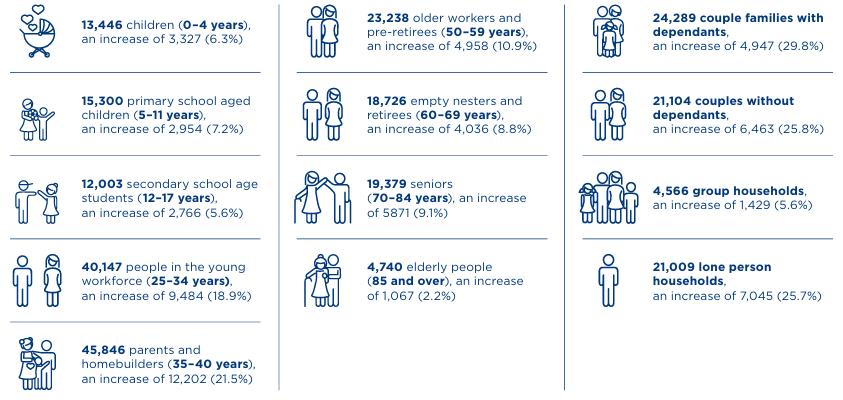
Source Profile ID, Australian Bureau of Statistics 2021 Census, Household Travel Survey 2019


















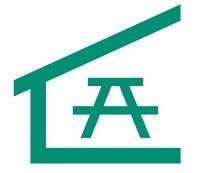



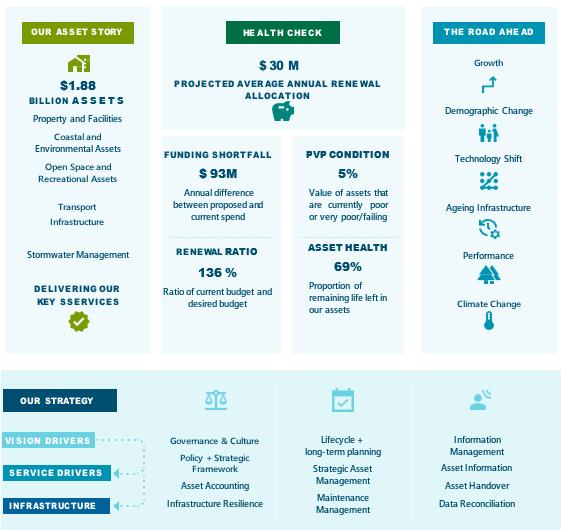
Our community expects assets to be provided to a standard that ensures public safety, amenity and accessibility and to support the delivery of quality services and programs. We need to balance delivering what our community needs and expects with what our community can afford.
With demographics, climate change, and technology constantly evolving over time, Our community needs, and expectations are bound to change.
With a finite budget for investment in assets, a planned and measured approach to asset management is necessary to ensure a fair and fiscally prudent long-term financial plan.
Council provides a range of services to our community. Our assets are valuable, tangible physical elements that are essential for delivering effective services and enhancing public well-being
These assets, both heritage and new, built and natural, belong to all our communities. They contribute to providing opportunities for current and future generations to work, live, play and thrive in a safe and habitable environment. Over time, these assets degrade through natural wear and tear, malicious damage or obsolescence. Balancing our ratepayer dollars to ensure these assets are maintained to their fullest potential is integral to our long-term financial sustainability.
Our assets exist to support the delivery of Council services and public amenity that, in turn, support our community’s social and economic needs. When making decisions about renewal or maintenance of our assets and/or prioritising our new asset investments, we always undertake life cycle analysis and what the appropriate levels of service are for an asset, prior to setting budgets.


Our Service Levels are defined by our expectations of the standard at which our asset network needs to perform. We define our service levels with respect to availability of the service, quality of the service, risk posed by service deficiency, accessibility of the service and comfort level of the service. This is illustrated in the examples below. We acknowledge that where a higher service level provision is required, due to higher utilisation and need, this will mean higher criticality of the asset providing the service.
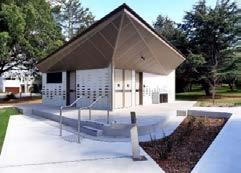

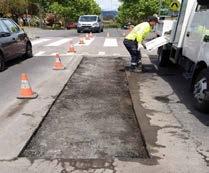


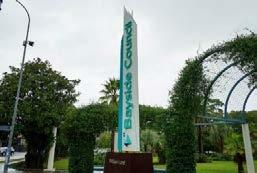
Bayside Council has embraced a lifecycle approach to asset management as described below
Planning & Design
When identifying asset requirements that meet service delivery needs over the long term, whole- of-life costs, and other factors such as affordability, equity, maintainability, and the environment are considered.
Creation & Acquisition
Before constructing, expanding, upgrading, or acquiring a new asset, alternative service delivery solutions are considered such as leasing or strategic partnerships. Any new build should align to an endorsed management plan or strategy and is supported by a life cycle cost that informs the LongTerm Financial Plan for long term maintenance and renewal needs.
Operations & Maintenance
The operation and maintenance of Bayside’s Transport assets are monitored consistently over their useful life. A program of planned condition assessments, maintenance and servicing is undertaken to minimise ongoing costs and the risk of asset failure and to ensure the asset remains operational, safe, compliant, and meets current levels of service intervention targets.
Renewal & Upgrade
Existing assets are replaced only when they have reached their intervention state– that is, they no longer support the required level of service delivery. Prioritisation of such works is based on criticality of the service and associated assets.
Disposal & Rationalisation
Where an asset no longer directly supports the required level of service delivery, decommissioning or rationalisation of the asset to reduce lifecycle costs is considered as part of long-term financial planning.
The condition for all asset classes is reported using a 1 to 5 rating system (IPWEA, 2015, IIMM, Sec 2.5.4, p 2|80) as shown below.
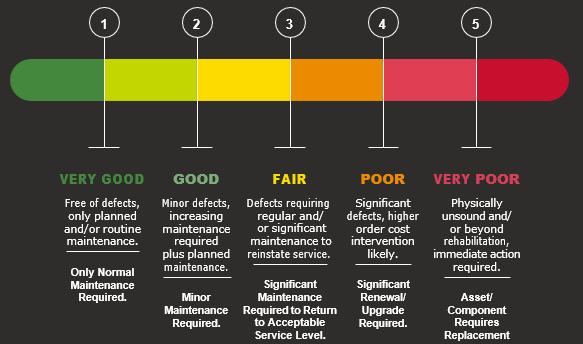
In 2023 an Asset Management Maturity Assessment was undertaken to assess Council’s current state and develop a roadmap for improving processes, people and systems.
The review rated Council’s compliance against the requirements of the IPWEA NAMS Framework. The assessment was based on interviews with Council staff, and a literature review of Councils documented asset management practices, processes and procedures.
Council's Asset Management maturity has been assessed as Developing to Competent in most areas. Note that this reflects the Asset Management maturity at a point in time when the assessment was carried out. Council aspires to achieve a maturity score of 3 upon completion of the Asset Management Improvement Actions detailed in the ‘What we will do’ section of this Strategy.
1 - Aware The organisation has no, or inadequate, processes in place to enable it to impact asset management outcomes or is done ad-hoc.
2 – Developing The organisation has identified the need for this requirement, and there is evidence of intent to progress it. Some elements may be done on an as needed basis for critical programs and activities.
3 – Competent The organisation has identified the means of systematically and consistently achieving the requirements and can demonstrate that these are being progressed with credible and resourced plans in place.
4 - Optimising The organisation identifies all requirements necessary for a successful asset management outcome, has document processes, and has trained its people in these processes.
5 - Excellent The organisation provides an exemplary level of capability which may be seen as a benchmark for good performance.
The assets owned and operated by our Council cross four asset management portfolios: totalling over $1.88 billion in replacement costs. These assets support nearly every aspect of our day-to-day activities. They keep us safe, healthy, connected, and employed. Maintaining existing infrastructure or assets is just as important as building new. The distribution of Bayside’s asset portfolio by asset category and replacement cost is shown below.
The development of strategic objectives within this Strategy has considered key challenges identified by these strategies and these are summarised below:

Population & Demographic Change - Planning Council services and infrastructure to support our growing population including an ageing population

Climate Change - Delivery of adaptation and carbon neutral approaches and supporting community and industry resilience

Regional Economy - Supporting strong local encomony and employment, inclusing local business, investment attraction, tourism and activation

Transport - Making it easier to get around including road upgrades, pedestrian / cycle networks but especially public / community transport and reduced travel times

Sport, Recreation & Green Space - Planning for sport, recreation and open space

Inclusion & well-being - Acknowledgment of and partnership with First Nations, community connection and well-being and disability access and inclusion

Technology Shift - Explore new and innovative delivery approaches
Council’s strategies and plans are developed to set the standards and direction for the services and outcomes we deliver. The supporting strategies and plans are crucial in addressing specific issues and / or details on how we are managing important areas of Bayside’s built and natural environments
Documents used to develop this Strategy include overarching state plans such as
The Greater Sydney Region Plan
10 year NSW 2021 State Plan, and
NSW housing targets
The following Bayside documents and influenced this Strategy:
Transport Strategy 2024
Annual Report 2023-24
Operational Plan and Budget 2024-25
State of our City Report 2022-2024
Community Satisfaction Survey 2023
Community Strategic Plan Survey
Risk Management Policy
Financial Reserves Policy-2024
Local Strategic Planning Statement 2020
Asset Management Policy 2023
Asset Management Strategy 2022
Environment & Resilience Strategy
SS7 Report 2024
Long-Term Financial Plan 2025-2034
Strategic Workforce Plan 2032
Over the next ten years we will work towards achieving the community outcomes identified in the Community Strategic Plan (CSP). The CSP is divided into four themes:
Theme One: In 2035 Bayside will be a vibrant and liveable place
Theme Two: In 2035 our Bayside community will be connected and feel that they belong
Theme Three: In 2035 Bayside will be green, resilient and sustainable
Theme Four: In 2035 Bayside will be financially sustainable and support a dynamic local economy.
The following table shows how Bayside’s assets support the delivery of the CSP
3.4 Bayside's
Assets managed by Council are utilised by a broad cross-section of businesses, visitors, workers and the local community. It is critical that assets are maintained and renewed based on needs identified for and by its users and stakeholders Key Stakeholders were engaged in the development of the Asset Management Plans and these plans contain more detail on how they were considered.
This diagram shows the Strategic Asset Management Targets for 2035




We aim to set our intervention standards to hold assets in a manageable state. These targets have been set based on several key considerations and they include:
National State of the Assets points at a national target to keep the number of assets in Poor and Very Poor Condition (PVP) below 8%
Australian Industry guidelines set a target to keep the Asset Funding Renewal Ratio greater than 80% (Australian Financial Guideline, IPWEA, 2015).
Assessing each operational individual asset class management plan, the recommended scenarios and indicators for each class, balancing these plans at the portfolio level.
Considering affordability and achievability – the capital works plan we are able to deliver across the 10 years must be affordable
Many of the services Council delivers to the community rely on our large and diverse portfolio of physical assets. Understanding the current state of these assets, their performance, costs, and risks enables us to plan and prioritise maintenance and management to best meet the community needs. To better manage their unique characteristics and challenges, assets are categorised into asset classes.


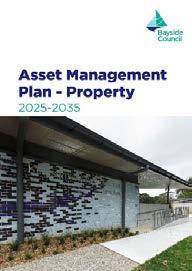

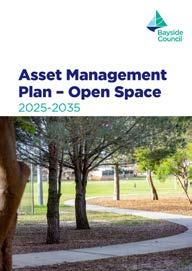


This Strategy presents a high-level summary of the state of the assets and their sustainability. Detailed data on each asset class, plus intervention levels and service monitoring, future financial sustainability options and consequences, are in the relevant asset management plans: Transport; Property; Stormwater; and Open Space which are summarised over the following pages

Asset Health is a measure of the remaining useful life of the asset portfolio. The following graph shows asset health (remaining life) by asset class as at 30 June 2024.
The value of Transport assets covered by this Strategy are estimated at $1,070 million as at 30 June 2024 and are summarised in the table below:
The following graph provides a snapshot of the asset’s health (remaining life) by type
Our transport assets enable people to move safely and efficiently around our region, whether as a driver or rider or as a pedestrian.
What does our work involve?
Maintenance and repairs to roads such as patching potholes, crack sealing and path grinding
Operational servicing such as street sweeping, vegetation management and weed spraying
Resurfacing of existing roads
Road rehabilitation or major patching of road failures
Replacement of sections of existing pathways to an equivalent standard
New constructed and assets contributed to Council
Road safety improvements eg crash barriers, intersection upgrades, etc
Traffic calming treatments eg roundabouts, speed humps, etc
Extension of existing pathway network to address gaps in connectivity
How much do we plan to spend over the next 10 years?
Over the next 10 years we expect to spend over $257 million on maintaining, renewing and improving the regions transport system. We plan to allocate renewal and maintenance funding at a level that aims to keep pace with the deterioration of our road network to retain the current average network condition of ‘Good’.
This funding allocation is informed by strategic modelling analysis that predicts the deterioration of our transport assets and the impact of various renewal funding scenarios on asset condition. An asset condition audit and revaluation management plan ensure that each asset class is assessed for condition every four years.
Changing population
The increased demand on local roads and their connections with State government and Collector roads due to population growth and increased dwelling density
Increased freight task Climate change Legislation & compliance
The increased deterioration of our road network due to an increased number of heavy vehicles and increased gross loadings
The lack of availability of the sustainable transport options, including public transport
The increased risk of damage to our transport assets due to more frequent and more extreme weather events
The need to consider resilience in the design and construction of new assets
What key actions will we take, including significant
The need to ensure compliance with the Road Act 1993
The need to meet the requirements of our Transport Strategy
The need to ensure clarity on which roads we are responsible for
Review Transport Asset Management Plan including technical and community levels of service
Footpath masterplan delivery and development of maintenance plans
Continue asset data maintenance and data cleansing
Continue trials of innovative products to progress towards a circular economy
Continue to undertake annual renewal programs based on asset condition assessment data
Continue to implement road safety initiatives
Path and trail renewal program
The value of Property Assets covered by this Strategy are estimated at $369.9 million as at 30 June 2024 and are summarised in the table below:
The graph below provides a snapshot of the asset’s health (remaining life) by type
Why do we have these assets?
Our buildings provide suitable accessible, inclusive, and welcoming spaces in which we can provide services both to and for the community.
What does our work involve?
Minor repairs to building components due to failure, vandalism, etc.
Unblocking drains, service checks, carpet repairs
Safety, compliance, and condition inspections
Major structural repairs
Replacement of roof, plumbing, cooling system or other building components
Replacement of heating and cooling systems
How much do we plan to spend over the next 10 years?
Building extensions
Sustainability improvements (eg Solar, water harvesting and reuse systems, etc.)
Construction of a new building to cater for increased or changing demand.
Over the next 10 years we expect to spend over $402 million on maintaining, renewing and improving the property portfolio.
Along with maintaining the condition of our buildings as they age and deteriorate; we will also need to provide facilities that are of a contemporary standard, making sure that they are accessible, environmentally sustainable, and meet the service needs of our growing and changing population.
Changing population Climate change Investment Legislation & compliance
The need to improve access for all genders and abilities and other underrepresented communities.
The need to meet diverse – and often competing –community demand and expectations for facilities.
The increased risk of damage to our buildings and facilities due to more frequent and more extreme weather events
The challenge of ensuring we meet the targets that we set.
Water harvesting to address prolonged periods of drought.
Clean energy sources installed on buildings to reduce Council’s carbon footprint.
The need to maximise the use of existing facilities and to manage assets that are surplus to need.
The unplanned maintenance liabilities associated with facilities that community groups are no longer able to manage.
The need to ensure compliance with all relevant legislation such as: accessibility, fire safety, occupational health, and safety, etc.
The need to ensure buildings are provided in line with the National Construction Code.
Need to ensure lease obligations are met.
An identified evidence-based program of works to ensure compliance with the building code.
Update the Property Asset Management Plan including technical and community levels of service.
Update condition assessments of Council buildings.
Community Infrastructure Plan implementation.
Review the Public Toilet Strategy.
Continue to invest in building related carbon reduction initiatives.

The value of Open Space Infrastructure assets covered by this Strategy are estimated at over $204 million as at 30 June 2024 and are summarised in the table below:
The following graph provides a snapshot of the asset’s health (remaining life) by type
Our open space assets enable allow us to enjoy many outdoor aspects of the Bayside region. Play spaces, including playgrounds, skate parks, fitness stations, sports reserves; sports courts, including netball and tennis; and other items, including park benches, picnic settings, barbeques, litter bins, and public lighting etc., are all covered under this portfolio.
Hazard / defect inspections
Mowing, vegetation / weed control
Garden bed maintenance
Litter collection and facility cleaning
Graffiti removal
Replacement of playground equipment
Replacement of park furniture
Rejuvenation or replacement of entire playing courts or sports fields to an equivalent standard Playing court extension Replacement of playground equipment to a higher standard Development of new park or reserve Foreshore improvements
How much do we plan to spend over the next 10 years?
The Council is well known for some of its key open space areas, as well as smaller community open spaces. The open space network provides a diverse range of opportunities for residents and visitors, as well as the preservation of significant natural environments and features.
Over the next 10 years we expect to spend over $169 million on maintaining, renewing and improving these open spaces.
A significant proportion of this expenditure is planned to be spent on the day-to-day activities that we undertake to maintain and care for our parks, playgrounds, sportsgrounds, and gardens.
The increased demand for specific outdoor recreation facilities and settings as well as new open spaces.
The increased expectation that we are working towards expanding our open space network
Managing the balance between Council and community owned facilities.
Balancing East and West Funding allocations.
The increased demand for specific outdoor recreation facilities and settings as well as new open spaces.
When installing new lighting or replacing existing lighting, consideration will be made to install with solar power panels which will power the lights and reduce greenhouse gas emissions.
What key actions will we take, including significant projects?
Revise the Open Space Asset Management Plan including technical data and community levels of service
Implementation of regular open space related maintenance programs
Develop / review Council’s Recreation, Open Space & Sports Strategy
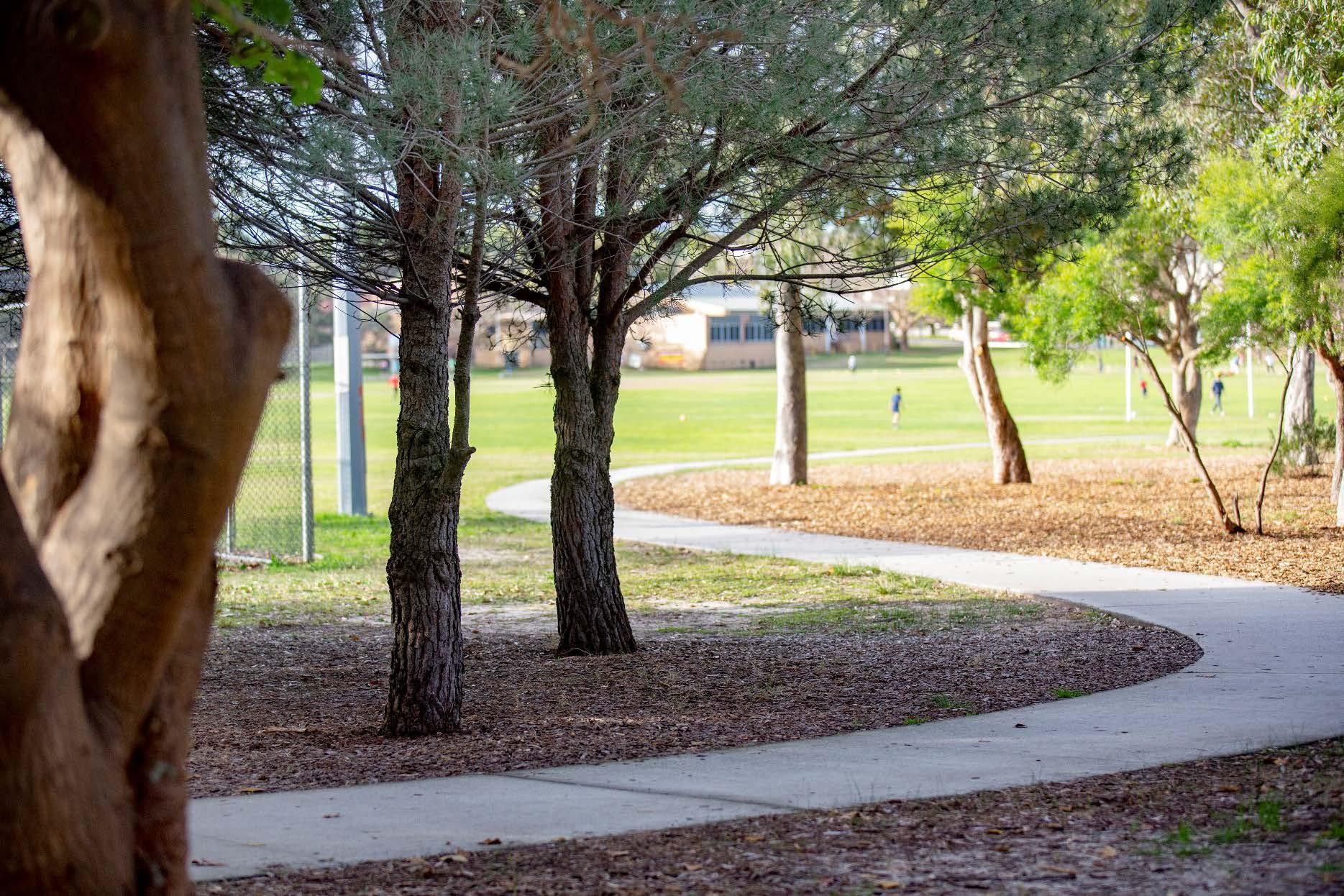
The value of Stormwater assets covered by this Strategy are estimated at over $192 million as at 30 June 2024 and are summarised in the figure below:
The following graph provides a snapshot of the asset’s health (remaining life) by type
Our stormwater assets help to manage the rainfall on our region.
What does our work involve?
Pit cleaning
Pipe cleansing and removal of debris, sediment, etc.
Removal of litter from Gross Pollutant Traps
Programmed inspections.
Replacement of pits and Pipes.
Rehabilitation of minor culverts and Water Sensitive Urban Devices.
Replacement of pipes to a higher hydraulic capacity.
Extension of the stormwater drainage network
Installation of stormwater quality improvement devices, eg rain gardens, litter traps
Expansion of stormwater harvesting network.
Upgrade of stormwater systems (GPT's & outflow points) to environmental standards.
We will continue to work on better understanding the performance of our drainage network to make sure that we are allocating sufficient funds to the management of our stormwater assets.
As we better understand the capacity of the network under climate change scenarios, we may identify areas that need improvement. We will continue to monitor the condition of the drainage network.
Improved information on the performance of the stormwater drainage network will enable more accurate lifecycle costs to be determined that will be reflected in future revisions of our Asset Management Strategy.
Need to upgrade existing drainage network to mitigate localised flooding due to increased volumes of stormwater runoff caused by continued urban consolidation.
Need to implement stormwater quality improvement initiatives to protect receiving waterways and coastal outflows affected by continued urban consolidation.
Need to upgrade some of our older stormwater assets that are currently under capacity to improve flood immunity
Need to deal with more frequent and extreme flooding events.
The ability to fund the timely renewal and upgrade of stormwater assets that are in poor condition.
The projected reduction in current levels of service with respect to flood protection and accessibility due to more frequent and more extreme weather events that lead to more flooding.
The increased need to expand provision of infrastructure for the capture, treatment and reuse of stormwater to enable us to make use of stormwater runoff as a sustainable resource.
What key actions will we take, including significant projects?
Expansion of our network at critical locations to prevent localised flooding.
Update the Stormwater Asset Management Plan including identification of technical and community levels of service.
Continue to update Council’s asset register by collecting stormwater asset information.
Update Council’s Stormwater Management Plan
Progress the Region’s major flood mitigation projects.
To ensure responsible and sustainable stewardship of our assets, we are committed to balancing our community’s needs and aspirations with what is affordable for ratepayers.
Making decisions about funding our assets requires ongoing balancing of service levels, risk and the need to adequately maintain and renew assets. Our aim is to achieve long-term asset sustainability.
To ensure the resources needed to manage our assets are provided, integration of the Asset Management Strategy and the Long-Term Financial Plan (LTFP) is critical
To achieve the financial objectives outlined in the LTFP, Council has implemented an improvement plan focused on identifying budget efficiencies to allocate funds annually for the future renewal of existing infrastructure assets.
The balance between maintaining and renewing our assets, and accommodating funding for improvement and growth, is a constant challenge – underfunding the renewal of an asset can lead to lower levels of service, and deferring an important asset upgrade can mean that the asset is no longer fit-for-purpose.
At Bayside, Financial Reserves are established to set aside funds for specific projects, as required. The former Rockdale City Council (West) collects a special levy from ratepayers within its area, which is transferred into an externally restricted reserve called the ‘Infrastructure Levy’ reserve. These funds are exclusively used for infrastructure renewal within the former Rockdale Council area or the west side of Bayside. However, residents of the former City of Botany Bay Council (East) do not pay this levy, leaving the area without a dedicated funding source for renewing its ageing infrastructure. As a result, Bayside Council must seek alternative funding sources, such as grants and planning agreements, to support infrastructure renewal in the Botany Council area or east side of Bayside
Additionally, through its improvement plan, Council has established an internally restricted reserve known as the ‘Infrastructure Maintenance’ reserve. This reserve is supported by annual budget allocations and is designed to fund infrastructure renewal across all of Bayside.
There is also the ‘Stormwater Management Levy Reserve’ which is raised on all properties in Bayside, the purpose of this levy is to fund stormwater management activities across all Bayside. This includes maintenance of stormwater systems, and provision of new stormwater systems.
Other reserves are managed under Council’s Financial Reserves Policy. All funding requirements identified for each asset portfolio have been allocated in the Long-Term Financial Plan. This will require future monitoring and further analysis as new asset information becomes available, such as new asset condition data. Funding requirements may potentially change which will require adjustment to the Asset Plan and the LTFP
Looking ahead to the next 10 years, our approach is to be prudent in our investment decisions using a holistic lifecycle approach to asset management.
This means that we will aim to plan our assets so that they will continue to support quality living, economic development, and environmental sustainability in the long-term.
Investment in asset maintenance and renewal will be balanced by significant investment in new and upgraded assets to meet current and future demand across the region as we grow and change.
Maintaining integration between our Asset Management Strategy and Long-Term Financial Plan is key to ensuring that future funding is allocated in a way that supports service delivery and effective asset management.
Our asset investment strategies align with our asset management and financial planning principles. We will aspire to:
Optimise asset life through timely and effective maintenance
Continuing to place a high priority on renewing our ageing assets
Managing the impacts of growth by being strategic in how we plan for our future asset needs
Complying with our obligations by actioning legislated standards in asset planning and development
Providing affordable services by balancing community needs and aspirations with what ratepayers can afford
Building resilient assets that not only deliver the best outcome for our community but also the best outcome for the environment
For the purposes of this Asset Plan, our asset spending is categorised in a way that helps us to plan our budgets and track how we spend our money on assets and services.
Lifecycle costs refer to how much money we will need to spend on an asset over the course of its useful life – that is, from the time a new asset is built or acquired to the time it is replaced or disposed of. The cost to create, operate and maintain an asset adds up; so future costs need to be spread over the long term, so we can plan to budget for this expenditure in coming years.
When determining when and how much we need to allocate to fund the lifecycle cost of an asset we consider costs according to the following categories
Operational & Maintenance costs. These include asset maintenance and operations and are determined according to levels of service and frequency of various activities, such as mowing parks, street sweeping, etc.
Renewal costs These are determined using our analysis tools that predict when an asset needs to be replaced based on its current condition and our understanding of how it ages and deteriorates over time.
Upgrade and New costs The amount and the level of priority we need to allocate to improve our assets are guided by our various strategies, plans and community expectations. A discretionary project must pass through our investment evaluation processes before it is selected for consideration in our capital works program.
Over the next 10 years we expect to spend:
$300 million Renewing our assets
$243 million Improving existing assets and creating new ones
$324 million Operating and maintaining our assets
Which equates to a combined investment of $869 million making sure our assets remain safe and fitfor-purpose. A detailed breakdown of what we expect to spend on each asset function over the next 10 years is provided in the individual asset profiles listed in the ‘Long-Term Investment Plan’ table on the following pages
A summary of the planned total expenditure by asset function for the 2025-2035 period is shown in the table below.
Strategic Asset Management Planning is not a set and forget process. It needs to be flexible to ensure our assets and levels of service are responsive to changes in population and demographics; the ongoing challenge of climate change; can capitalise on emerging trends and opportunities; continue to meet agreed requirements as priorities change over time.
This Asset Management Strategy will be formally reviewed and updated every four years in line with the new Council term to provide opportunities for the new Council to make any required changes. Intermediary reviews may be undertaken to provide the opportunity to reflect improvements achieved, major financial decisions made, the consideration of any relevant external factors, or changes to longterm capital works programs to ensure it is responsive to our available financial resources over time.
We acknowledge that significant annual expenditure is required to manage and maintain our existing infrastructure. This highlights the importance of maintaining high-level skills and practices to ensure services are delivered economically and sustainably; Council is committed to continuously working to improve our knowledge, skills, and operational practices in line with sector-wide best practice.
The financial analysis and projections in this Asset Management Strategy are based on existing data, systems, processes, and standards. Council is committed to improving our practices to achieve a more robust evidence base and analysis. One of the keys to this will be engaging with our community to establish optimised service levels that are affordable over the long term.
The Asset Management Improvement (AMIP) roadmap highlights action item opportunities that Council can prioritise and implement to improve their SAM capabilities within the context of the organisations overall Asset Management System. One of the key outcomes of the AMIP is to improve alignment between the Asset Management Planning process and the Long-Term Financial Plan.
1 Review and implement a responsibility matrix with a view to streamline roles and responsibilities. Identify critical Asset Management functions and key staff positions responsible for those. 2025 High Internal Staff commitment, Executive Committee endorsement and must be aligned to the responsibilities in the Policy
2 Develop a Capital Project Prioritisation Framework for Council 2026 Moderate Staff time commitment, in particular Finance and Project teams. Executive Committee endorsement and commitment from Councillors via Policy endorsement.
3 Develop a Service Catalogue for Bayside 2025 High Internal Staff commitment, Executive Committee endorsement
4 Create an Asset Management Policy that defines Council's vision, direction, and service delivery objectives for infrastructure asset management 2025-26 Moderate Staff time commitment, in particular Finance and Project teams. Executive Committee endorsement and commitment from Councillors via Policy endorsement.
5 Revise individual Asset Management Plans covering a 10 year period for Council's infrastructure asset classes, including Buildings & Other Structures, Roads, Bridges, Footpaths and Other Road Assets, Stormwater, Swimming Pools, and Open 2025-26
Moderate Staff time commitment, in particular Finance and Project teams. Executive Committee endorsement and commitment from Councillors
Space Assets, to deliver an agreed standard of service via Policy endorsement. In progress
6 Develop an Asset Management Strategy to meet better practice standards in managing and maintaining Council's infrastructure assets
7 Determine and define clear roles, responsibilities, and accountabilities across Council, aligning with the strategic and operational direction of infrastructure asset management
8 Ensure a requisite level of asset management best practice amongst key staff and elected members
9 Ensure business processes, procedures, and plans for all infrastructure asset management activities are clearly documented and reviewed
10 Develop an improvement plan to evaluate and review the performance of Council's infrastructure asset classes as outlined in the Asset Management Plans
11 Ensure infrastructure data and information are updated and accurate to inform datadriven strategic decision making
12 Ensure Council's strategic direction for asset management planning is informed by the wider Integrated Planning and Reporting process
13 Incorporate the current state and projected expenditure for Council's assets into the Annual Budget and Long-Term Financial Plan to enhance asset management, ensuring a transition from annual budgeting to long-term financial planning
& 2028
progress, A RACI Matrix (and required process maps) have been developed.
Renewal Expenditure based on 2024 planned funding allocation projected over a 10 year period
New & Upgrade Expenditure based on 2024 planned funding allocation projected over a 10 year period
Maintenance and Operational Expenditure based on 2024 planned funding allocation projected over a 10 year period
Local government is the third level of government in Australia. It is an elected system of government directly accountable to the local community. Each Council is an independent, statutory body responsible for administering the Local Government area over which it has jurisdiction. Leadership is provided by Council, comprising the elected representatives, or Councillors, who work together to provide good governance for the benefit of the community.
The power of Local Government is controlled by Acts of State Parliament such as the Local Government Acts. Councils are concerned with matters close to our homes, such as building regulations and development, local roads and footpaths, parks and playing fields, libraries, local environmental issues, waste disposal, and many community services. These tasks would be difficult for a state government to manage because they are local issues. Councils can deliver services adapted to the needs of the community they serve.

At Bayside, the community is at the heart of everything we do, which is why community engagement is vital to our work and activities. We are dedicated to ensuring that the voices of our residents are heard and that they are kept informed about Council's projects, opportunities, and initiatives.
The goal of community engagement is to ensure that the perspectives of community members and stakeholders are not only heard but valued, shaping outcomes that directly impact their lives. Community engagement, also known as public participation, involves actively involving residents in decision making processes and the development of initiatives that affect them.
By engaging with the community, Council aims to align its services, solutions, and initiatives with the needs and values of Bayside residents, fostering positive relationships and building trust.
As the level of government closest to the community, Councils are dedicated to fostering social cohesion and a sense of belonging for all residents.
We believe that everyone should have the opportunity to fully participate in society without discrimination.
This commitment includes ensuring fair access to resources and services while fostering equitable treatment for everyone, regardless of their gender, race, ethnicity, class, age, marital or parental status, sexual orientation, disability, or religious beliefs
We integrate social justice principles into all our planning and decision-making processes, which are:
Equity - fairness in decision making, prioritising and allocation of resources particularly for those in need.
Access - fair access to services, resources and opportunities to improve quality of life.
Participation - the maximum opportunity to genuinely participate in decision making.
Rights - equal rights established and promoted for people from diverse linguistic, cultural and religious backgrounds to participate in community life.

The City Resilience Framework, developed the Rockefeller Foundation, assesses the strengths and weaknesses of cities within 4 ‘dimensions’ and 12 ‘drivers’. The framework was adopted by metropolitan Sydney and Bayside Council applies this framework to all its medium and long term plans.
City resilience is the capacity of people, communities, businesses and systems within a city to survive, adapt and thrive no matter what kinds of chronic stresses and acute shocks they experience.
Acute shocks are sudden events that threaten a city and include heatwaves, floods, disease outbreaks and cyberattacks.
Chronic stresses weaken the fabric of a city on a day-to-day basis and include rising inequity, housing unaffordability, family violence and inadequate public transport.
The 4 dimensions are:
Health and Well-being - the essential city services that safeguard human health and diverse and secure livelihoods
Economy and Society - the social and financial systems that enable urban populations to live peacefully, and act collectively
Infrastructure and Environment - the way in which built and natural assets provide critical services and protect residents
Leadership and Strategy - effective leadership and management, empowered stakeholders and integrated planning.
People, organisations, businesses, communities and cities that survive disasters all show resilient behaviours and decision making. Metropolitan Sydney can learn from these experiences including from significant floods, fires, heatwaves, droughts, infrastructure failures, cyberattacks and a global pandemic. The strategy has the below 5 directions:
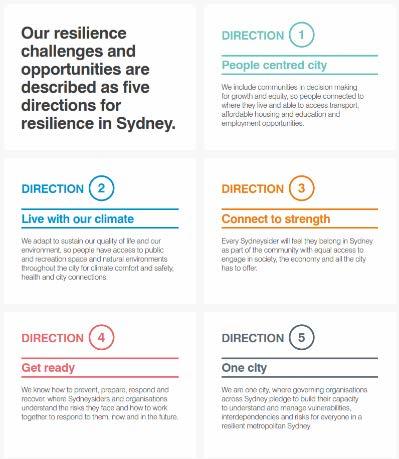
At Bayside we have an adopted Governance Framework that articulates the corporate approach to ‘governance’. It considers the range of governance issues under the 4 main elements:
Ethics & Values
Manage Risk
Decision Making
Monitor & review
Each issue includes the principles of good governance, as well as the policies and practices of Council to achieve those principles.
Good governance is achieved by having efficient and effective decision making processes and systems. The use of appropriate policy and accountability frameworks enable Councils to focus on strategic rather than operational issues.
Council’s Governance Framework articulates our practices in order to achieve good outcomes and includes reference to our ethics and values (ie Code of Conduct, Internal Reporting, Business Ethics, Conflicts of Interest), our approach to Risk Management (ie fraud and corruption prevention, internal audit, compliance and privacy), our decision making (ie roles and responsibilities, Code of Meeting Practice, delegated authorities, policies and procedures) and the way Council will monitor and review our business (ie integrated planning and reporting, performance management, complaints handling, registers and access to information).
A copy Council’s Governance Framework can be found on Council’s website via this link Bayside Governance Framework
Effective decision making demonstrates to the community and other stakeholders that Council is operating with transparency, probity, and in the best interests of all concerned. Sound decisions withstand scrutiny by regulators, courts, and the media.
Decision making occurs at many levels within Council – it is supported by various forums that comprise Councillors, staff, community members and/or independent specialists. Council strives to have effective decision making processes in place through its robust governance framework.
There are principally four groupings of meetings:
Council meetings
Statutory Committees (Local Planning Panel, Audit Risk & Improvement Committee (ARIC), Flood Plain Management and Traffic)
Committees (City Planning & Environment, City Services, City Works & Assets, and City Performance)
Administrative Committees (Executive and Leadership, Strategic Asset Management Committee, IT Steering Committee)
Attend our meetings in persons and/or watch online via Council’s YouTube Channel - Bayside Council - YouTube
Read the Business Papers (Agendas and Minutes) for the meetings, they are available on Council’s website via this link
Address Council and/or Committee meetings. You can address Council on a report that is on the agenda for that meeting prior to a decision being made by Council. Requests to address Council at Public Forum can be found on Council’s website via this link
Integrated Planning & Reporting (IP&R) is the framework developed by the NSW State Government to guide Councils in the planning, reporting and delivery of its community’s priorities.
IP&R enables Council to allocate resources to projects and activities based on the needs and direction provided by our community, and to ensure these align to the community’s values and vision for Bayside. It is where we Identify , Plan , Fund & Report on services and outcomes for our community. Council also has an important role to play in advocating for, and partnering with, other agencies to achieve local outcomes.
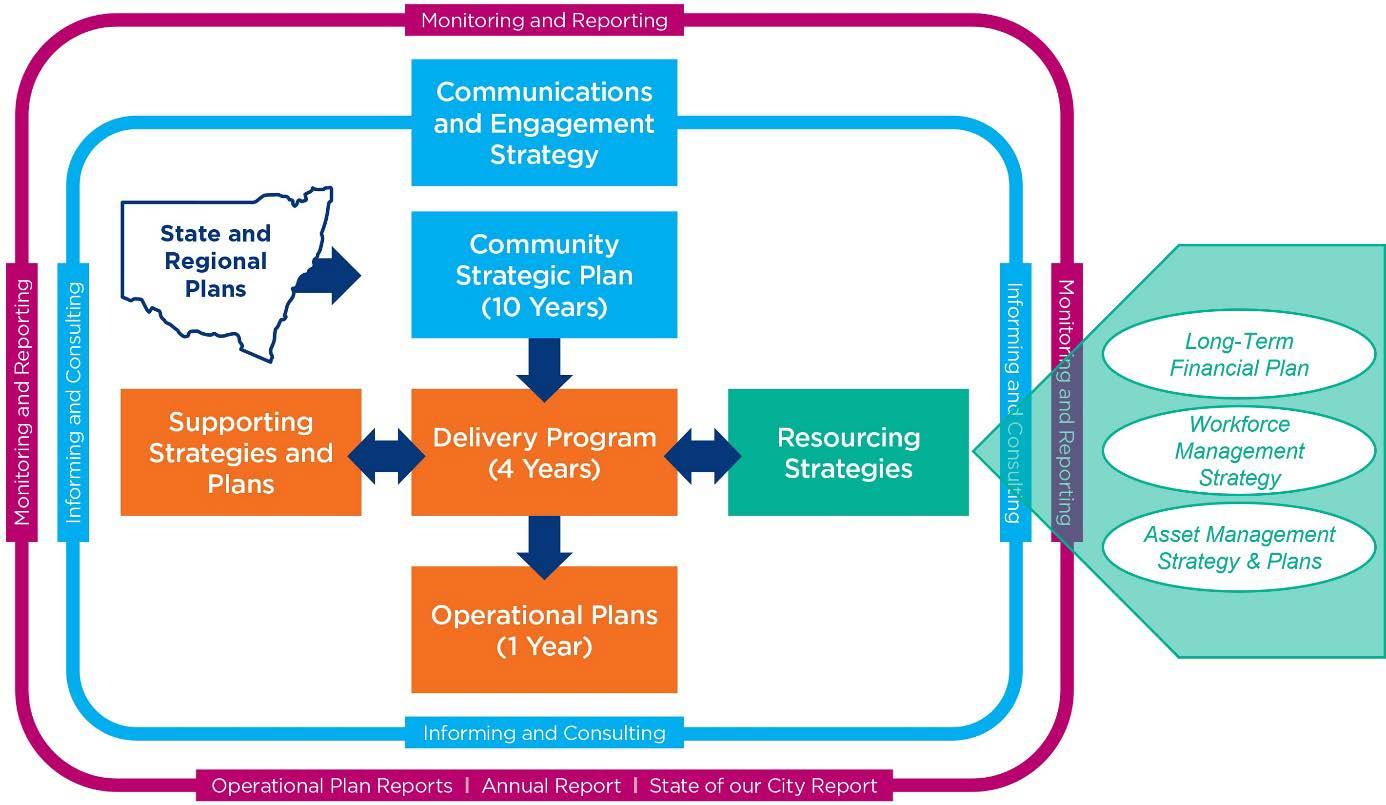
The key elements of the IP&R framework are a suite of documents described below:
Community Engagement Strategy Community engagement is at the heart of Local Government. It enables communities to be active participants in shaping their future. It is critical for Councils to open opportunities for the community to be involved in the strategic planning process. This strategy supports the development of all plans, policies, programs and key activities, demonstrates a commitment to genuine and inclusive engagement and is based on social justice principles.
Community Strategic Plan Identifies the main priorities, vision and aspirations of our community for the future. It includes the themes, outcomes and strategies Council plans to achieve them.
Delivery Program Council’s 4 year commitment to achieving the prioritised strategies and outcomes of the Community Strategic Plan during its term of office. It sets out the key priorities that Council will deliver and how our performance will be measured. All plans, projects, activities, funding, and resource allocations are directly linked to the Delivery Program. It is supported by strategies and plans developed to focus on areas of Bayside’s environment, people and other priorities.
Resourcing Strategies To support the Delivery Program, Council is required to develop Resourcing Strategies. The strategies ensure Council has the necessary people, funds and infrastructure available to deliver its commitments. Three interrelated documents make up the strategy: The LongTerm Financial Plan; Workforce Management Strategy and Asset Management Strategy
Supporting Strategies & Plans Council has developed plans, strategies, codes and policies to set the standards and direction for the services and outcomes we deliver. These Supporting Strategies & Plans sit below the Community Strategic Plan in the IP&R hierarchy and reflect its principles, values and objectives. The supporting strategies, in turn, inform the Resourcing Strategy, Delivery Program and Operational Plan. Examples of the key strategies and plans are the Local Strategic Planning Statement; Customer Experience Strategy; Arts & Culture Strategy; Reconciliation Action Plan; Disability Inclusion Action Plan, Information Management & Governance Strategy; Land & Property Strategy; Environment & Resilience Strategies etc.
Operational Plans (& budgets) These specify the detailed actions and funding for each activity that will be delivered and reported on annually to achieve the priorities of the Delivery Program.
Reporting Council produces 3 main reports under this framework, 6 monthly Operational Plan reports, an Annual Report and at the end of every term of Council, a State of our City Report.
This Policy is a separate document and available on our website
Introduction
Purpose
Assets deliver important services to communities. The purpose of this policy is to provide a framework for the management of assets of which Council is the custodian. The framework ensures Bayside’s infrastructure assets continue to meet community needs for current and future generations. This is achieved through continuous improvement approach to asset management, which includes maintaining and delivering infrastructure related services in a financially sustainable manner that ensure the city meet legislative requirements for asset management.
Definitions
Definitions of terms and phrases are outlined in the Glossary in the Policy
Scope
This policy applies to all infrastructure assets owned or controlled by Bayside Council, assets which are critical to Council’s service delivery and assets which are incorporated in the Community Strategic Plan and Delivery Program
Policy Statement
Asset Management Policy Goals and Objectives
The goal of asset management is to meet a required level of service in the most cost-effective way through the planning, creation, acquisition, maintenance, operation, rehabilitation and disposal of assets to provide for present and future customers. The principles to guide asset management planning and decision-making focus on:
Ensuring service delivery needs based on consumer demand forms the basis of asset management.
Integrating asset management with corporate governance, strategic, financial, business and budgetary planning.
Informed decision making, incorporating a lifecycle approach to asset management.
Establishing accountability and responsibility for asset condition, use and performance, and
Sustainability, providing for present needs while sustaining resources for future generations.
Maintain the balance between Council’s Community Service Obligation and the commercial aspects of the management of the assets
Asset Management Policy Practice and Procedures
Council aims to put in place asset management strategies and practices. This means that Council will continually be developing and improving its knowledge, systems and processes and strategies to ensure it is providing the level of asset management necessary to competently, responsibly and sustainably manage the community’s assets now and into the future.
Council’s long-term goal is to achieve ‘advanced’ asset management practice across all of the asset groups as appropriate. Council may seek to achieve industry ‘best practice’ at some time in the future however the cost and effort needed to achieve this level against potential benefits will be carefully considered.
Asset Management Audit and Review
As a minimum there will be annual internal reviews of the Bayside Asset Management Strategy, asset management systems, asset management practices and asset management plans.
More comprehensive external reviews and audits of asset classes will be conducted at least every 4 years to coincide with the mandatory asset revaluation cycle set out in AASB116? (or AASB1041 check with finance)
Policy implementation
Policy responsibilities
Sustainable asset management is the responsibility of all elected representatives and employees of Council. Accountability and responsibilities are as follows:
Councillors - Are primarily responsible in ensuring that their decisions represent and reflect the needs of the wider community. Council will engage with the community to determine their main priorities and expectations for the future and through the Community Strategic Plan and Delivery Program will detail the strategies and resources that will be used to achieve these goals.
General Manager - Primarily responsible in ensuring the development and resourcing of Council’s strategic asset management plans, processes and systems to ensure they comply with all requirements of the Integrated Planning & Reporting framework under the Local Government Act.
Strategic Asset Management Committee - Ensure all asset management activities are consistent with the objectives of Community Strategic Plan, Asset Management Plan and the Long-Term Financial Plan and regulate the process and systems that develop and implement asset management plans and delivery.
Directors and Business Unit Managers - Develop and implement infrastructure assets management plans, systems, policies and procedures.
Council Staff - Have specific responsibility for asset management development, planning and implementation in accordance with the Bayside Asset Management Strategy. Officers will continuously seek opportunities to improve adherence to the Bayside Asset Management Strategy, by establishing specific asset monitoring, auditing and review mechanisms. The end purpose is to deliver the services and expectations of the community through Council’s assets in the most efficient and cost effective manner.
Document control
Review
This Policy shall be reviewed at least every 4 years.
Related documents
Local Government Act 1993
Community Strategic Plan Asset Management Strategy
Asset Management Plans
These guiding principles reflect our commitment to a best-practice, contemporary approach to asset management.
Service Excellence
Delivering high quality services to our customers and businesses, through wellmaintained and reliable assets.
Maintaining assets and open spaces that are sustainable, resilient, and adaptable to changing environmental conditions, ensuring long-term service continuity and community wellbeing.
Optimising public funds by making informed asset investment decisions that balance short-term affordability with long-term economic and environment value.
Leveraging data and technology to inform Asset Management decisions, ensuring transparency and accountability in our processes.
Engaging the community to understand their needs and preferences, involving them in Asset Management decisions and prioritising their interests as identified in the Community Strategic Plan.
Diversity, Equity, and Inclusion
Providing asset and management supports services that are accessible, equitable and inclusive ensuring community safety and fostering diverse utilisation.
Workforce Development Regulatory Compliance Continuous Improvement
Investing in the workforce to build a skilled, adaptable, and innovative team capable of delivering effective Asset Management decisions.
Upholding the highest standards of compliance with relevant legislation and industry best practices, demonstrating our commitment to responsible Asset Management.
Cultivating a culture of continuous improvement, regularly reviewing and enhancing our Asset Management plans, processes, and systems.
Legacy Building
Leaving a legacy of well-maintained assets that support the current and future needs of the community.
Council takes a lifecycle management approach to asset management planning, considering the resourcing requirements to operate, maintain, rehabilitate and renew assets to meet service level requirements and assess useful life expectancy.
To ensure we get the best possible return on our asset spending, we take a lifecycle approach to asset management that considers the costs of an asset over its useful life – that is from the time a new asset is built or acquired to the time it is replaced or disposed of. This approach allows us to get the most out of our assets by meeting required levels of service in the most cost-effective way.
Council’s Asset management practices are also governed internally by the Asset Management Policy, the Asset Management Strategy (this document) and supporting documents and strategies. The whole process is supported by enablers such as technology, data, processes and people, and is informed by key corporate and strategic documents.
Financial sustainability remains a significant challenge for Council as our asset renewal and maintenance costs are rising faster than our rate revenue. This is due to several factors, including upgrading assets to meet community expectations, receiving new assets from the state government, and acquiring new assets to accommodate population growth and increased density, which in turn increases our future service provision needs. Our projections indicate that maintaining current service levels will require an additional $93 million in renewal and maintenance expenditure over the next decade.
Financial sustainability is one of the biggest challenges facing Council ie balancing community expectations for future service provision. Our modelling forecasts, that if current service levels were to be delivered into the future, our renewal and maintenance expenditure is likely to require an additional $93 million over the next 10 years.
The funding deficit has notably reduced compared to previous projections, attributed to external funding received through grants. These grants, totalling over $21 million, have fuelled substantial renewals across Bayside in the past two years. Furthermore, the revised Capital Works Program now encompasses significant projects not previously accounted for, including the Boulevard Carpark, Mascot Oval, and updated costs for the Botany Aquatic Centres.
Each of these projects involves some element of asset renewal, with identified funding sources, therefore, substantially reducing the gap in funding observed in previous Long-Term Financial Plans.
To address this financial challenge, the Council has several options to review and approve:
Increasing revenue : Net revenue remains a challenge, review rates, increase grants, or increase other income (including property income) beyond the CPI and the cost of delivering all our services. While full cost recovery can be a challenge for our community, the focus is mainly on the income sources that can increase the surplus.
Reducing expenditure : The Council has a dedicated function to identify efficiency gains through process improvements or service reviews that can achieve sustainable savings that will increase our surplus.
Reviewing current asset holdings: This is achieved through our Land and Property Strategy, which focuses on increasing revenue or finding more appropriate uses for existing land or property.
Any improvements in surplus will be re-invested into renewal and maintenance.
Over the past three years, Council has achieved a noticeable improvement in closing the infrastructure gap. To sustain this progress, Council will effectively balance its expenditure with its income level.
There are several ways Council intends to continue to tackle this issue:
A one-off rate increase, beyond the recommended rate peg to allow for the rate-base to be readjusted.
Ensure ongoing identification of efficiencies during the operational plan development.
Prudent management of available grants, and life cycle consideration of allocation of funds toward new assets, with a primary focus on maintaining and renewing the existing asset portfolio.
Key Terms & Abbreviations
Asset Health
Capital Expenditure
Consumption Ratio
Financial Ratios
Infrastructure Assets
Asset Health refers to the life expectancy and serviceability of the asset portfolio
Expenditure for new infrastructure and for the renewal or upgrade of existing assets that enhances the service potential of the assets.
Written Down Value of an asset / Gross Replacement Costs measured using the remaining life of an asset or its component.
Recommended target = 60 – 85%.
Reporting ratios in Financial Statements - Renewal funding ratio, Life Cycle Indicator and Consumption Ratio.
Stationary systems forming a network and serving whole communities where the system, as a whole, is intended to be maintained indefinitely by continuing replacement and refurbishment of its components, eg roads, facilities, footpaths, drains, parks.
Intervention Level The physical state of an asset is defined by its condition, capacity or functionality at which Council will determine a treatment action.
LATM Local Area Traffic Management Devices
Lifecycle Indicator Planned 10 year LTFP / Desired 10 year LTFP costs (maintenance, renewal, upgrade, and new expenditure for desired service level). Recommended target = 85-115%.
Long-Term Financial Plan
A Long-Term Financial Plan based on a Service Level Target that produces a year by year forecast of the investment needed in capital renewals, capital upgrades, new infrastructure, and ongoing maintenance.
Maintenance Expenditure that is incurred to ensure that the asset continues to provide its predetermined service capacity and quality and achieves its expected useful life. Maintenance expenditure is of a regular and ongoing nature.
Renewal Funding Ratio Planned renewal budget for the next 10 years / desired renewal costs for the next 10 years (as per the desired service level). Recommended target = 85-115%.
Service Centric Approach
An approach where the characteristics, locations, condition, and functional fitness of future assets are defined by the services that Council intends to provide and the levels at which these services are targeted.

Online
Email: council@bayside.nsw.gov.au
Website: www.bayside.nsw.gov.au
Phone
1300 581 299 or +61 2 9562 1666
Visit our Customer Service Centres
Monday to Friday 8:30 am – 4:30 pm
Rockdale Library, 444-446 Princes Highway, Rockdale Westfield Eastgardens, 152 Bunnerong Road, Eastgardens
Post
Bayside Council PO Box 21
Rockdale NSW 2216